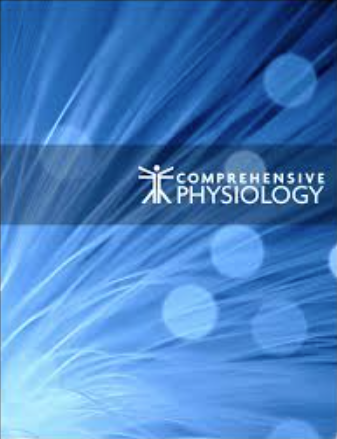求助PDF
{"title":"机械通气期间呼吸-心血管相互作用:生理学和临床意义。","authors":"John Kreit","doi":"10.1002/cphy.c210003","DOIUrl":null,"url":null,"abstract":"<p><p>Positive-pressure inspiration and positive end-expiratory pressure (PEEP) increase pleural, alveolar, lung transmural, and intra-abdominal pressure, which decrease right and left ventricular (RV; LV) preload and LV afterload and increase RV afterload. The magnitude and clinical significance of the resulting changes in ventricular function are determined by the delivered tidal volume, the total level of PEEP, the compliance of the lungs and chest wall, intravascular volume, baseline RV and LV function, and intra-abdominal pressure. In mechanically ventilated patients, the most important, adverse consequences of respiratory-cardiovascular interactions are a PEEP-induced reduction in cardiac output, systemic oxygen delivery, and blood pressure; RV dysfunction in patients with ARDS; and acute hemodynamic collapse in patients with pulmonary hypertension. On the other hand, the hemodynamic changes produced by respiratory-cardiovascular interactions can be beneficial when used to assess volume responsiveness in hypotensive patients and by reducing dyspnea and improving hypoxemia in patients with cardiogenic pulmonary edema. Thus, a thorough understanding of the physiological principles underlying respiratory-cardiovascular interactions is essential if critical care practitioners are to anticipate, recognize, manage, and utilize their hemodynamic effects. © 2022 American Physiological Society. Compr Physiol 12:1-24, 2022.</p>","PeriodicalId":10573,"journal":{"name":"Comprehensive Physiology","volume":"12 3","pages":"3425-3448"},"PeriodicalIF":4.2000,"publicationDate":"2022-04-26","publicationTypes":"Journal Article","fieldsOfStudy":null,"isOpenAccess":false,"openAccessPdf":"","citationCount":"3","resultStr":"{\"title\":\"Respiratory-Cardiovascular Interactions During Mechanical Ventilation: Physiology and Clinical Implications.\",\"authors\":\"John Kreit\",\"doi\":\"10.1002/cphy.c210003\",\"DOIUrl\":null,\"url\":null,\"abstract\":\"<p><p>Positive-pressure inspiration and positive end-expiratory pressure (PEEP) increase pleural, alveolar, lung transmural, and intra-abdominal pressure, which decrease right and left ventricular (RV; LV) preload and LV afterload and increase RV afterload. The magnitude and clinical significance of the resulting changes in ventricular function are determined by the delivered tidal volume, the total level of PEEP, the compliance of the lungs and chest wall, intravascular volume, baseline RV and LV function, and intra-abdominal pressure. In mechanically ventilated patients, the most important, adverse consequences of respiratory-cardiovascular interactions are a PEEP-induced reduction in cardiac output, systemic oxygen delivery, and blood pressure; RV dysfunction in patients with ARDS; and acute hemodynamic collapse in patients with pulmonary hypertension. On the other hand, the hemodynamic changes produced by respiratory-cardiovascular interactions can be beneficial when used to assess volume responsiveness in hypotensive patients and by reducing dyspnea and improving hypoxemia in patients with cardiogenic pulmonary edema. Thus, a thorough understanding of the physiological principles underlying respiratory-cardiovascular interactions is essential if critical care practitioners are to anticipate, recognize, manage, and utilize their hemodynamic effects. © 2022 American Physiological Society. Compr Physiol 12:1-24, 2022.</p>\",\"PeriodicalId\":10573,\"journal\":{\"name\":\"Comprehensive Physiology\",\"volume\":\"12 3\",\"pages\":\"3425-3448\"},\"PeriodicalIF\":4.2000,\"publicationDate\":\"2022-04-26\",\"publicationTypes\":\"Journal Article\",\"fieldsOfStudy\":null,\"isOpenAccess\":false,\"openAccessPdf\":\"\",\"citationCount\":\"3\",\"resultStr\":null,\"platform\":\"Semanticscholar\",\"paperid\":null,\"PeriodicalName\":\"Comprehensive Physiology\",\"FirstCategoryId\":\"3\",\"ListUrlMain\":\"https://doi.org/10.1002/cphy.c210003\",\"RegionNum\":2,\"RegionCategory\":\"医学\",\"ArticlePicture\":[],\"TitleCN\":null,\"AbstractTextCN\":null,\"PMCID\":null,\"EPubDate\":\"\",\"PubModel\":\"\",\"JCR\":\"Q1\",\"JCRName\":\"PHYSIOLOGY\",\"Score\":null,\"Total\":0}","platform":"Semanticscholar","paperid":null,"PeriodicalName":"Comprehensive Physiology","FirstCategoryId":"3","ListUrlMain":"https://doi.org/10.1002/cphy.c210003","RegionNum":2,"RegionCategory":"医学","ArticlePicture":[],"TitleCN":null,"AbstractTextCN":null,"PMCID":null,"EPubDate":"","PubModel":"","JCR":"Q1","JCRName":"PHYSIOLOGY","Score":null,"Total":0}
引用次数: 3
引用
批量引用

 求助内容:
求助内容: 应助结果提醒方式:
应助结果提醒方式:


